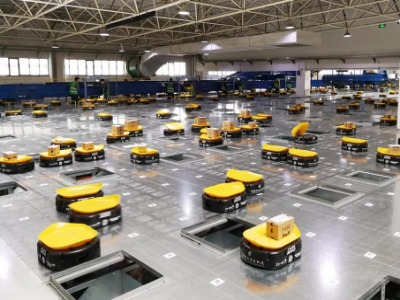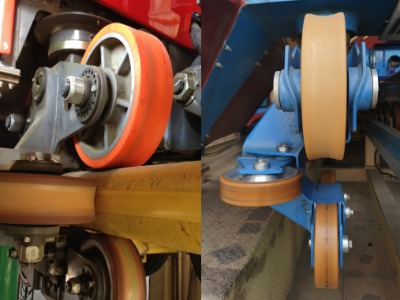In the production lines of the chemical and pharmaceutical industries, safety, cleanliness, and precision are paramount. While we focus on advanced reactors, precision instruments, and strict manufacturing protocols, there is one seemingly ordinary yet critically important component silently supporting it all—the industrial wheel. These wheels are far more than mere tools for mobility; they are purpose-built "special forces" tailored to specific applications, ensuring smooth, safe operations from raw materials to final products.

Scenario 1: Handling Raw Materials and Intermediates – The Foundation of Heavy-Duty and Chemical Resistance
Typical Equipment:IBC tote, heavy-duty carts, chemical drum transporters
These devices transport hundreds of kilograms to several tons of raw materials—including strong acids, alkalis, and organic solvents—in environments prone to chemical splashes. This places critical demands on the wheels:
Chemical Resistance: Materials like high-performance polyurethane (PU), nylon, or specially formulated nitrile rubber are essential. They resist chemical degradation, preventing swelling, softening, or breakdown that could cause sudden failure.
Structural Integrity & Load Capacity: Heavy-duty wheel brackets paired with high-load bearings (e.g., roller bearings) ensure smooth, effortless movement even under extreme loads.
Operational Safety: In areas with flammable or explosive solvents, anti-static or conductive wheels are mandatory to dissipate static charges safely, eliminating the risk of ignition.
Scenario 2: Production Areas and Cleanrooms – Ensuring Dust-Free and Ultra-Clean Environments
Typical Equipment:Cleanroom trolleys, mobile filtration units, sterile formulation material transfer carts
In pharmaceutical sterile rooms and high-end electronic chemical production areas, microscopic contamination from wheel wear or chemical leaching can compromise entire product batches. The wheel solutions must meet stringent requirements:
Low-Particle Emission: Wheels are constructed from materials with extremely low wear rates and feature smooth, seamless surfaces to minimize particle generation and prevent fiber entanglement.
Cleanroom Compliance: They are certified for ISO Class 5/6/7 environments, utilizing materials that do not emit volatile organic compounds (VOCs) to protect air purity.
Hygienic Design: Stainless steel brackets, which allow for easy contamination detection, are paired with easy-to-clean treads made of high-performance PU or PTFE (Teflon), combining corrosion resistance with superior cleanability.
Scenario 3: Laboratories and R&D Centers – Partners in Precision and Flexibility
Typical Equipment:Laboratory instrument carts, gas cylinder safety racks, mobile workbenches
Laboratory environments present unique challenges for wheel selection: space constraints demand mobility to optimize layouts, while sensitive instruments require protection from vibration and high-pressure gas cylinders need absolute stability. This necessitates wheels with superior shock absorption, reliable braking, and quiet, non-marking operation.
Precise Positioning and Safety: Central or side-locking brakes ensure workstations and equipment carts remain completely stationary during experiments, guaranteeing both accuracy and safety.
Vibration and Noise Control: High-elasticity rubber or polyurethane (PU) materials effectively absorb vibrations from uneven floors, protecting delicate instruments. Soft treads also enable silent operation.
Maneuverability and Floor Protection: Non-marking wheels prevent unsightly scuffs and damage to expensive epoxy or PVC flooring, while ensuring easy and smooth movement.
Scenario 4: Warehousing and Logistics – The Test of Efficiency and Durability
Typical Equipment:Heavy-duty shelving systems, flatbed carts, forklifts
Wheels made from materials like ultra-high molecular weight polyethylene (UHMW-PE) or specialty nylons provide exceptional durability, significantly extending service life and reducing long-term maintenance costs.
Challenge: Low-Temperature Brittleness
Solution: Cold-Temperature Adaptability
Specially formulated rubber or plastic compounds remain elastic and reliable at temperatures as low as -30°C, preventing cracking and ensuring operational safety in cold chain environments.
Conclusion: Choosing Wheels is Choosing Safety and Efficiency
In the chemical and pharmaceutical industries, selecting industrial wheels is far more than a simple accessory decision. It directly impacts production safety, product quality, operational costs, and space utilization. Matching the right wheel to each specific application—whether a corrosion-resistant heavy-duty wheel, a sterile cleanroom wheel, or a vibration-damping wheel for sensitive instruments—is a strategic element in building a robust, efficient, and compliant operational system.
For detailed technical support or application-specific recommendations, please contact our engineering team.





